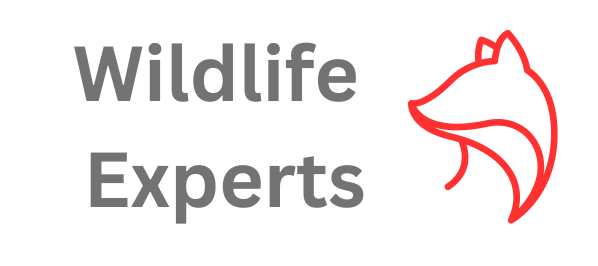Dealing with an Animal in the Attic: A Comprehensive Guide
Discovering an animal in the attic can lead to unexpected challenges, posing threats to both your health and property. This guide will walk you through the essential steps of identifying, removing, and preventing future invasions of critters in the attic.
Recognizing the Presence of an Animal in Your Attic
Identifying the animal in your attic accurately is crucial for effective removal and to prevent any additional harm to your property. By recognizing the signs, you can take appropriate action to address the issue promptly. Look out for telltale indications such as strange noises, scratching sounds, or droppings. Additionally, if you notice any damage to insulation or chewed wires, it could be a clear indication of animal activity. It is essential to consult a professional wildlife removal service to safely and humanely handle the situation. Taking immediate action will not only protect your property but also ensure the well-being of the animals involved. In some cases, you may even come across peculiar odors or torn nesting materials. Remember, attempting to remove the animal yourself can be risky and may lead to further complications. It is best to rely on experts who have the necessary knowledge and experience to handle such situations safely. By seeking professional assistance, you can guarantee a swift and effective resolution, ensuring that your attic remains free from unwanted guests.
Noises: Unusual sounds, especially at night, could be a sign of an animal in your attic. These could be scratching, scurrying, or even chirping noises. A strong and unpleasant odor might also be noticeable.
Distinguishing Animal Sounds: Determining the specific animal based on noises can be tricky. Rats and mice often make scratching or gnawing sounds, while squirrels in the attic may produce rapid, erratic noises. Heavy thumping sounds could indicate raccoons, and high-pitched squealing or chirping might point to birds or bats.
Investigating Animal Feces: Droppings can also provide clues to the type of animal in your attic. Rat and mouse droppings are small and pellet-like, squirrel droppings are larger and cylindrical, and raccoon droppings resemble dog feces. Birds and bats leave small, black or brown droppings that may accumulate in piles.
If you’re uncertain about the type of animal in your attic or believe you have a wildlife infestation, it’s safest to contact a professional wildlife removal service like Trutech. Our trained technicians can assess the situation, safely remove the animals, and provide effective solutions for critter removal from the attic.
The Risks of Having Animals in Your Attic
Animals in your attic can cause significant damage and pose health risks. It is vital to address these problems promptly to avoid additional complications.
Structural Damage: Animals like raccoons, squirrels, or bats can cause significant structural damage by chewing through insulation, wiring, and wooden beams.
Health Hazards: Animal infestations can bring along various diseases and parasites. Breathing in contaminants from their droppings and urine can lead to respiratory problems and other health issues.
Fire Hazards: Animals often chew on electrical wires, creating a serious fire risk and possibly causing power outages or damage to appliances.
Professional help from a wildlife removal service like Trutech Inc. is recommended if you suspect animal activity in your attic. Our team excels in animal in attic removal, will safely remove the animals, repair any damage, and implement preventive measures against critters in the attic.
Securing Your Attic Against Animal Entry
To prevent animals from entering your attic, it’s vital to secure it effectively. Here are some practical preventive measures:
Sealing Entry Points: Inspect your attic for gaps or holes and seal these using durable materials to stop animals from entering.
Trimming Nearby Tree Branches: Trim any branches within six feet of your roof to eliminate potential bridges for critters in the attic.
Installing Attic Vent Covers: Install sturdy vent covers to keep animals out while still allowing proper ventilation.
If you discover an animal infestation, it’s best to seek professional assistance from a wildlife removal expert like Trutech for animal in attic removal. Our experienced team can safely remove animals and provide long-term solutions to prevent future infestations.
Humane Animal Removal Techniques
Trutech Inc. prioritizes safe and humane removal methods, focusing on the well-being of the animals and the safety of your home. We specialize in critter removal from the attic, using trapping and relocation techniques, ensuring the animals are relocated to a suitable habitat far from your property. In addition, we utilize humane exclusion methods to prevent future entry of squirrels in the attic. By choosing Trutech Inc., you can have peace of mind that the issue will be resolved efficiently and humanely.
Cleaning and Sanitizing Your Attic After Animal Removal
Post animal in attic removal, it’s crucial to clean and sanitize your attic. Here are some steps to follow:
Removing Animal Waste: Wear protective gear and carefully remove any animal droppings, nesting materials, or debris. Thoroughly clean the affected area using a vacuum cleaner with a HEPA filter.
Disinfecting the Attic: Use a disinfectant specifically designed for animal waste and consider using an odor neutralizer to eliminate any lingering smells.
Restoring Attic Insulation: After the attic is clean, restore the insulation to maintain energy efficiency and prevent future animal intrusions.
While these steps are beneficial, critter removal from the attic and attic cleaning can be complex tasks, so it’s recommended to contact a professional wildlife removal service like Trutech Inc.
